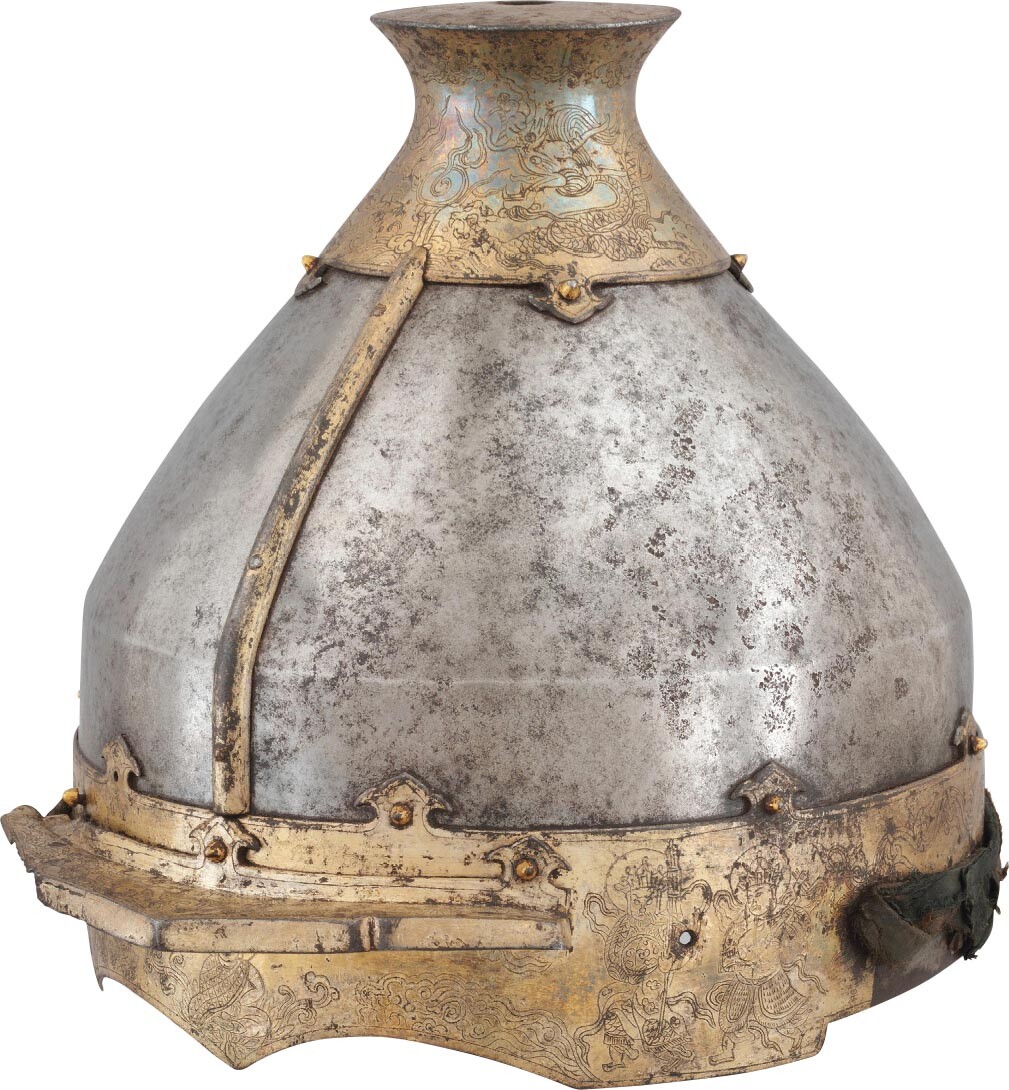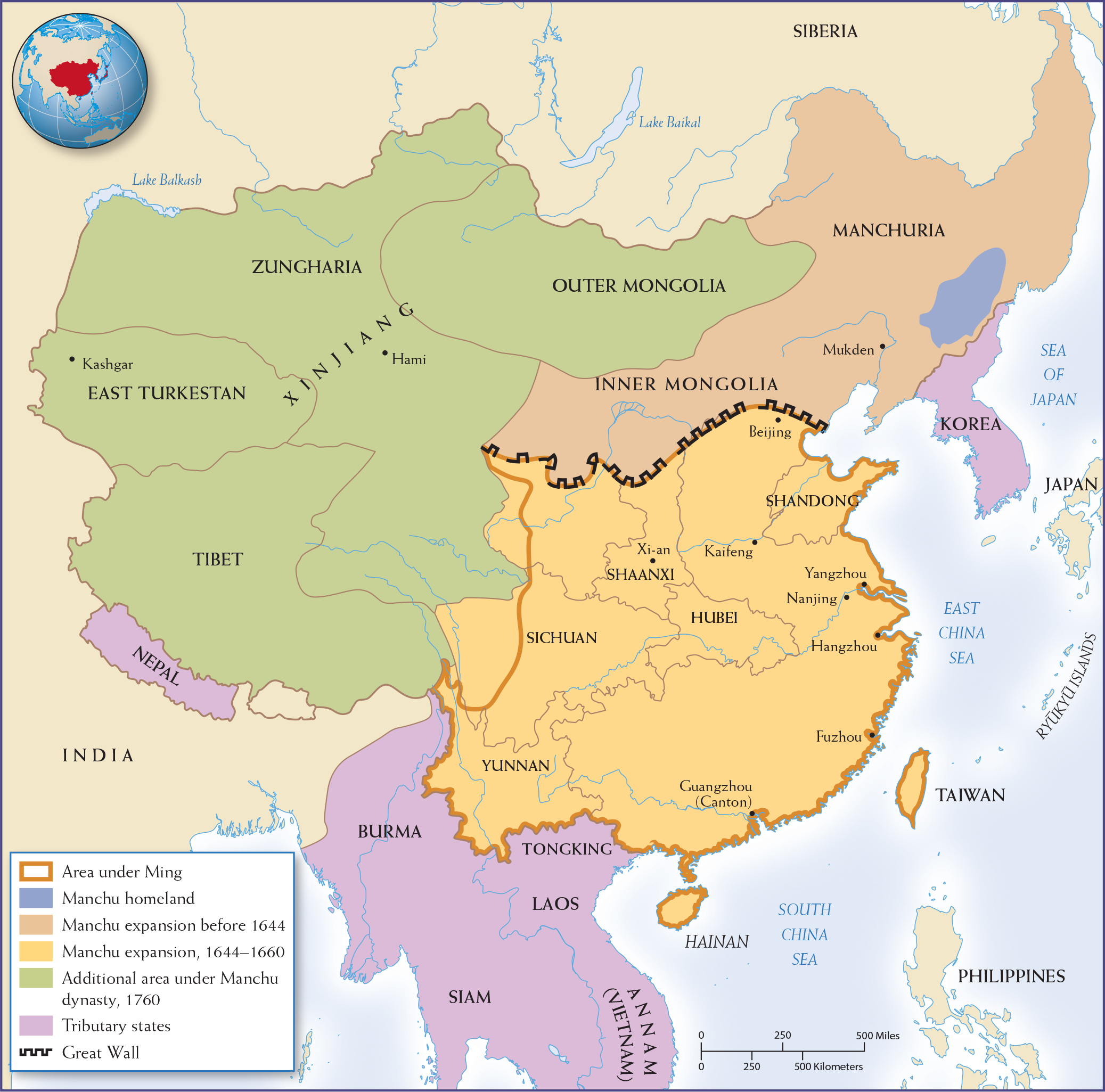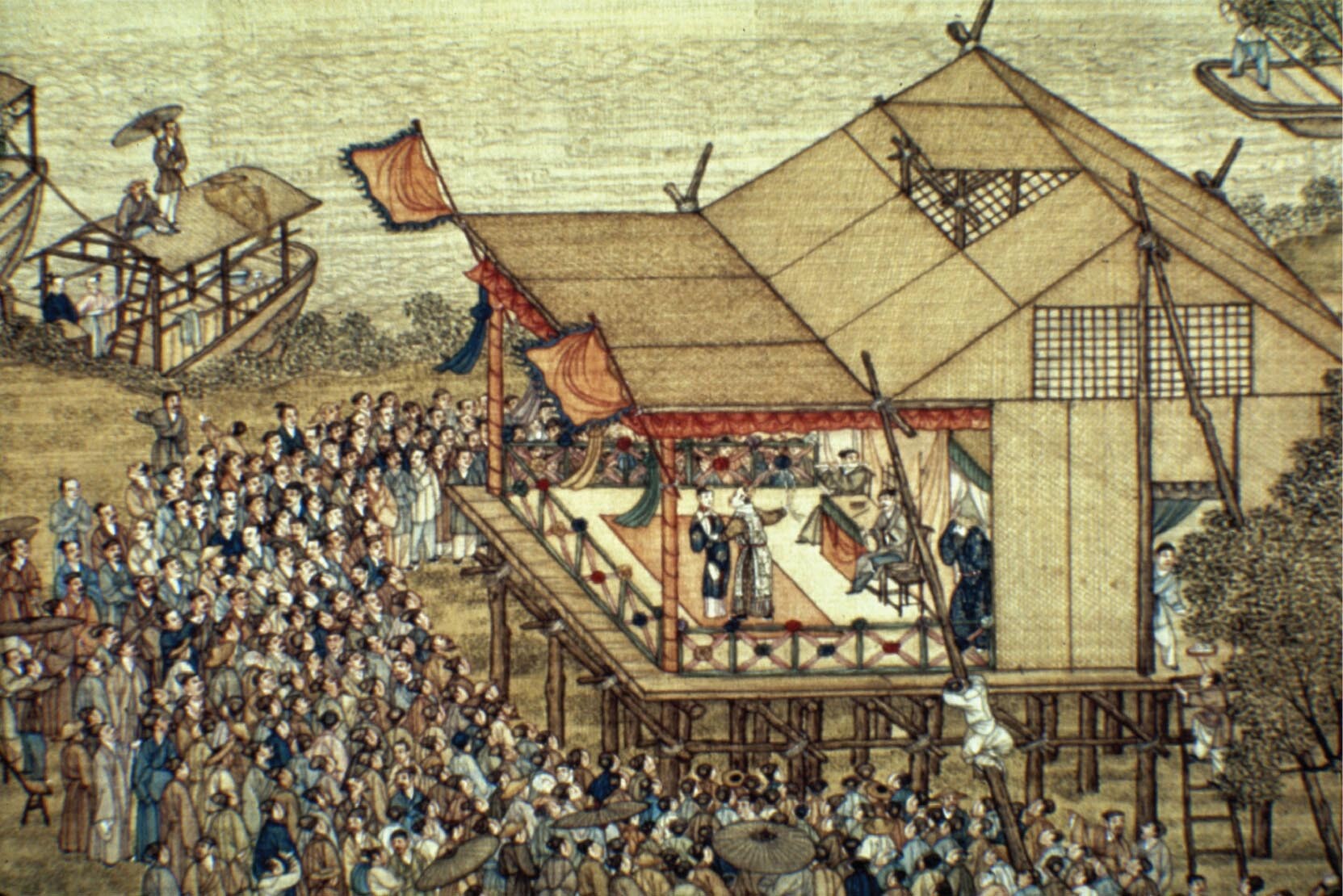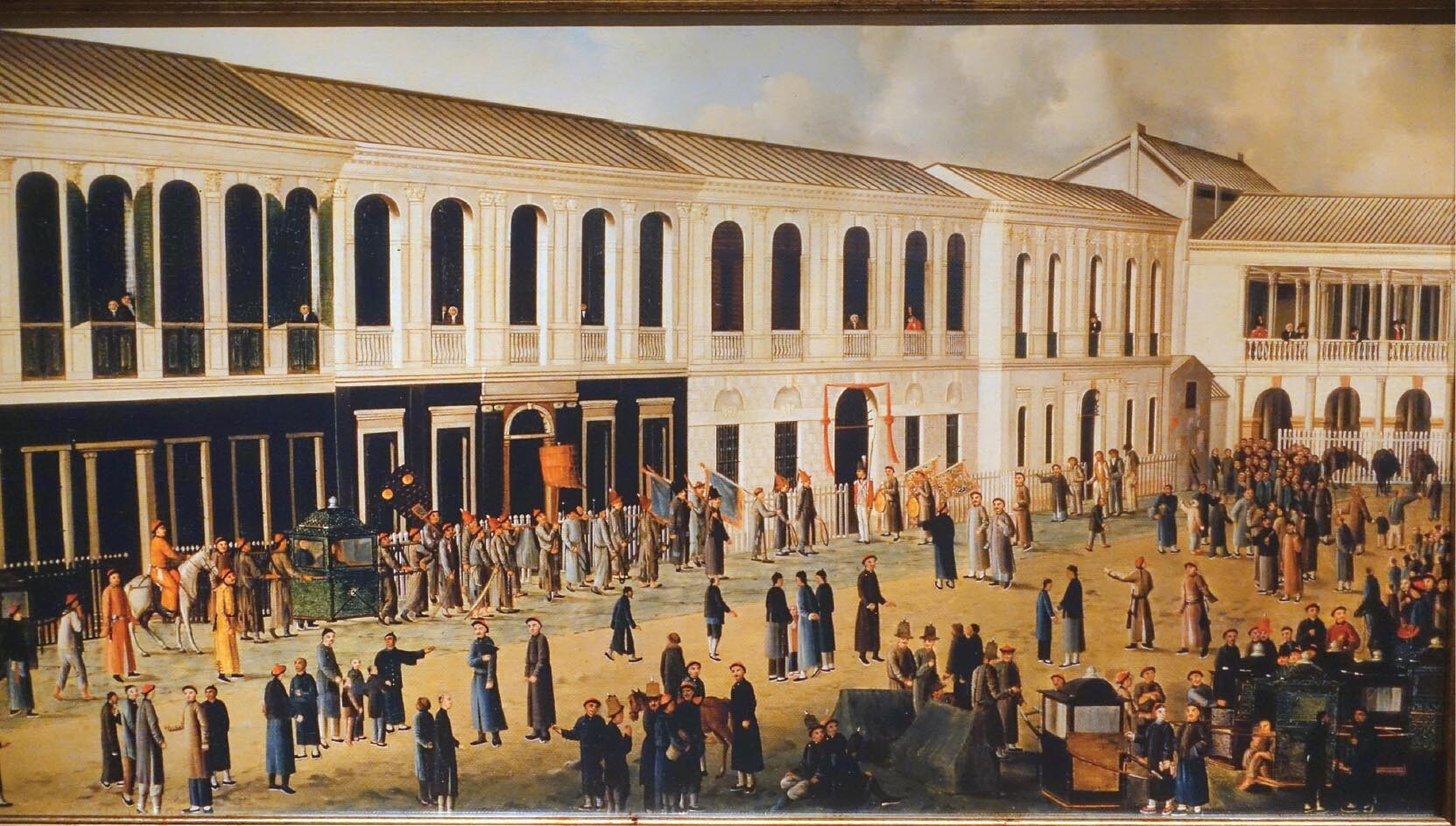The Chinese Economy and New World Silver
Comparative Perspectives on Climate Change: The Ottoman Empire and Ming China
The Little Ice Age ravaged two of Afro-Eurasia’s largest and most stable empires—the Ottoman Empire and Ming China. But what destabilized both regimes was not just the scarcity of food but the growing pressure by rulers to extract wealth from their populations to fund endless wars around imperial fringes and to subdue unrest at the core. In other words, while working populations endured with less, their rulers wanted more. The squeeze was explosive. In both empires, peasants and nomads, driven by severe famines, rose in rebellion, asserting that their rulers had failed to look after them. One survived, and the other did not.
The Ottomans Struggle to Maintain Power and Legitimacy
Hardest and earliest hit by climate change was the eastern Mediterranean. Here, fierce cold and endless drought brought famine and high mortality. In 1620, the Bosporus froze over, enabling residents of Istanbul to walk from the European side of the city into the Asian side. In Ottoman territories dependent on floodwaters for their well-being, such as Egypt and Iraq, food was in short supply and mortality rates skyrocketed. In addition, the import of New World silver led to high levels of inflation and a destabilized economy. Yet, in spite of the dire circumstances, the Ottomans continued their military campaigns against the Habsburgs to the west and a prolonged, brutal struggle with the Safavids to the east. Desperate for revenues to pay their armies, the Ottomans imposed soaring taxes. Banditry, nomadic invasions of settled lands, refusal to pay taxes, and ultimately outright revolt were the inevitable result.
THE CELALI REVOLT AND KÖPRÜLÜ REFORMS A revolt, begun in central Anatolia in the early sixteenth century, continued with fits and starts throughout the century and reached a crescendo at the beginning of the seventeenth century. This later full-blown uprising took its name from Shaykh Celali, who had led a rebellion in the early sixteenth century. Later rebels called themselves Celalis, looking to his life for inspiration. With a 30,000-strong army, the rebels turned much of Anatolia into a heartland of pillaging, looting, burning of villages, and killing. Large segments of the Ottoman population, many of whom were Shiites or turned to Shiism to express their opposition to Ottoman rule, joined the rebellion. Poised to assault Istanbul in 1607–1608, the rebels squared off against the sultan’s troops outside the capital. It did not go well for the insurgents; they were no match for Ottoman armies. The empire pulled back from the edge of collapse. Still, the human suffering went on.
The Ottomans may have survived, but their regime was crippled. The empire’s population, around 35 million in the 1590s, was still below that number when the first official census was carried out in 1830. Meanwhile, the European powers with access to New World colonies leapfrogged over the Ottomans economically, militarily, and culturally.
The Ottomans did, however, experience a period of good governance in the mid to late seventeenth century in spite of Mustafa Ali’s pessimistic predictions. New grand viziers from the Köprülü family spearheaded changes to revitalize the government. Known as the Köprülü reforms, the changes in administration reenergized the state and enabled the military to reacquire some of its lost possessions. Revenues again increased, and inflation decreased. Fired by revived expansionist ambitions, Istanbul decided to renew its assault on Christianity (see Chapter 11)—beginning with rekindled plans to seize Vienna. Although the Ottomans amassed an enormous force outside the Habsburg capital in 1683, both sides suffered heavy losses and the Ottoman forces ultimately retreated. Under the treaty that ended the Austro-Ottoman war, the Ottomans lost major European territorial possessions, including Hungary.
Despite failing to take Vienna, the Ottoman state flourished in the first half of the eighteenth century. No event was more resplendent than the two weeks of feasting, parades, and entertainment that accompanied the circumcision of the sultan’s sons in 1720. Istanbul also once again became a beehive of political activity, adorned with new palaces and mosques.
THE MAMLUKS IN OTTOMAN EGYPT A weakened Ottoman state prompted outlying provinces to assert their autonomy. Egypt led the way. Here, too, plummeting temperatures and monsoon failures leading to aridity and low Nile waters may have been factors. Egypt experienced extremely low Niles from 1641 to 1643, owing to catastrophic drought, and then such extreme cold that a Turkish traveler in the 1670s reported that everyone who could afford to wore fur-lined clothing.

More information
A painting of the siege of Vienna. The background shows the city itself, circular and surrounded by walls. It is built near a river. The fighting takes place in the foreground. Soldiers fight on horseback, with bows and arrows, pistols, spears, and swords. Some of the Ottomans ride camels. A group of soldiers hold many banners and smoke floats above the fighting
In 1517, Egypt had become the Ottoman Empire’s greatest conquest. The wealthiest Ottoman territory, it was an important source of revenue and initially was well governed by its Ottoman-appointed governors. Its payments to Istanbul exceeded those of any other Ottoman province. Yet, starting in the mid-seventeenth century, households modeled on the sultan’s arose and increasingly asserted their independence from Istanbul. By the latter half of the eighteenth century, the dominant households were made up of Mamluks (Arabic for “owned” or “possessed”), military men who had ruled Egypt as an independent regime until the Ottoman conquest (see Chapter 10). Although the Ottoman forces had routed the Mamluks on the battlefield in 1517, Ottoman governors in Egypt allowed the Mamluks to reform themselves. By the second half of the eighteenth century, these military men were nearly as powerful as their ancestors had been in the fifteenth century when they ruled Egypt independently. Mamluk leaders also enhanced their power by aligning with Egyptian merchants and catering to the ulama. Turning the Ottoman governor in Egypt into a mere figurehead, this provincial elite kept much of the area’s fiscal resources for themselves at the expense of the imperial coffers and the local peasantry.
Although the Ottoman Empire survived the impact of the Little Ice Age (in contrast to the Ming dynasty in China), it emerged in a severely weakened condition. The Celali revolts resulted in devastating population losses, while the repeated low Nile floods reduced food and tribute payments from Egypt to Istanbul, further weakening the Ottoman state. The decline was not entirely associated with climate change, however. Heterodox and Sufi religious leaders challenged the Sunni orthodoxy of the clerical and bureaucratic classes. In Egypt and the other Arab provinces of the Ottoman Empire, local notables, notably Mamluks in Egypt and warlords and religious leaders in greater Syria, sought autonomy from Istanbul.
Ming China Succumbs to Manchu Rule
The Ming dynasty was less fortunate than the Ottomans. It did not survive the pincers of climate change and war. Drought and freezing temperatures affected food production not only in China proper, where the Ming prevailed, but also throughout Inner China, where by the seventeenth century the Manchus of Manchuria were a rising power. The Ming capital of Beijing suffered grievously. An estimated 300,000 perished within the inner city in 1644, causing many Han Chinese to conclude that the Ming had lost the mandate of heaven.
THE MANCHUS FIND A VULNERABLE TARGET Like the Ottoman Empire, China’s imperial state always had contentious enemies on its frontier; what the Safavids posed to Istanbul’s eastern flank the Manchus posed to Beijing’s northern flank. By the early seventeenth century, a rising Manchu population, based in Inner China and unable to feed its people in Manchuria, threatened to breach the Great Wall in search of better lands. Food shortages and drought drove the Manchus into China proper, where they found a Chinese government and its population in disarray from famines, civil war, and fiscal crisis. Peasant rebellions crippled central authorities. Outlaw armies swelled under charismatic leaders. The so-called roving bands wreaked havoc across the countryside. The most famous rebel leader, the “dashing prince,” Li Zicheng, reached the outskirts of Beijing in 1644. Only a few companies of soldiers and a few thousand eunuchs stood to defend the capital’s 21 miles of walls. Li Zicheng seized Beijing easily. Two days later, the emperor hanged himself. On the following day, the triumphant “dashing prince” rode into the capital and claimed the throne.
News of the fall of the Ming capital sent shock waves around the empire and beyond. In the far northeast, where China meets Manchuria, the Ming army’s commander received the news within a matter of days. Tasked to defend the Ming against their Manchu neighbors, the commander knew a precarious position when he saw one. Caught between an advancing rebel army on the one side and the Manchus on the other, he made a fateful decision: he struck a pact with the Manchus for their cooperation to fight the “dashing prince.” In return, his new allies got the gold and treasure in the capital. Thus, without shedding a drop of blood, the Manchus joined the Ming forces to bring down Ming power. After years of coveting the riches of the south, the Manchus were finally marching on Beijing. (See Map 13.5.)

More information
A ceremonial silver helmet of the Qing dynasty. It has gold sections along the bottom and top of the helmet connected by a thin strip along the side. It is shaped like the top section of a tear drop with a flat top.
While the declining Ming state shared some commonalities with the troubled Ottoman Empire, there were specific features of Chinese rule that accounted for the regime’s collapse. An important factor was that China was a dynamo in the emerging world economy, which destabilized its inner balance; opening China was disruptive. There was more hunger for Chinese goods from abroad and more thirst for silver from within. As noted in Chapter 12, Europeans used New World silver to pay for their purchases of Chinese goods. The surge of silver from the New World and Japan had heated the Chinese economy. Increasing monetization of the economy, which turned silver into the primary medium of exchange, bolstered market activity and state revenues at the same time. Then, when silver shipments to China declined due to downturns in New World mining output, and more precious metals were swallowed up in European wars, the supply of money contracted in China; inflation suddenly gave way to deflation and shortages. Chinese peasants could not meet their obligations to state officials and merchants. The frustrated masses thus often seethed with resentment, which quickly turned to rebellion. The result was a perfect storm of food shortages, regional defections, and fiscal crisis, which brought down the Ming dynasty in 1644.

More information
Map 13.5 is titled, From Ming to Qing China, 1644-1760.The map shows the area under Ming, the Manchu homeland, Manchu expansion before 1644, from 1644-1660, and additional area under Manchu dynasty, 1760, as well as tributary states and the location of the Great Wall. The Manchu homeland is a small area in Manchuria just north of Korea. Before 1644, they had expanded into all of Manchuria and Inner Mongolia. By 1660, expansion had taken over much of present-day eastern China (which also is the area under Ming). By 1760, the Manchu dynasty had taken over Outer Mongolia, Zungharia, East Turkestan, and Tibet. The Manchu tributary states include Nepal, Burma, Siam, Laos, Annam (Vietnam), Tongking, and Korea. The Great Wall lies on the border between Inner Mongolia and the area of Manchu expansion from 1644 to 1660.
MAP 13.5 | From Ming to Qing China, 1644–1760
Qing China under the Manchus expanded its territory significantly during this period. Find the Manchu homeland and then the area of Manchu expansion after 1644, when the Manchus established the Qing dynasty.
- Where did the Qing dynasty expand? Explain what this tells us about the priorities of the ruling elite, in particular with respect to global commerce.
- Explain the significance of the chronology of Chinese expansion. Does this qualify your answer to the first question?
- What does the chronology of Chinese expansion tell us about the evolution of the ruling elite’s priorities?
- Consider the scope of Chinese territorial expansion in this period, and, based on your reading, explain the challenges this posed for central authorities.
THE QING DYNASTY ASSERTS CONTROL Despite their small numbers, the Manchus overcame early resistance to their rule and oversaw an impressive expansion of their realm. Descendants of the Jurchens (see Chapter 10), the Manchus emerged as a force early in the seventeenth century, when their leader claimed the title of khan after securing the allegiance of various Mongol groups in northeastern Asia and paved the way for their eventual conquest of China.
When the Manchus defeated Li Zicheng and seized power in Beijing, they numbered around 1 million. Assuming control of a domain that included perhaps 250 million people, they were keenly aware of their minority status. Taking power was one thing; keeping it was another. But keep it they did. In fact, during the eighteenth century, the Manchu Qing (“pure”) dynasty (1644–1911) incorporated new territories, experienced substantial population growth, and sustained significant economic growth. Despite coming to power at a time of political chaos, the Manchus established a stable and long-lived imperial system in contrast to the political and economic turmoil that rocked the societies of the Atlantic world.
The key to China’s relatively stable economic and geographical expansion lay in its rulers’ shrewd and flexible policies. The early Manchu emperors were able administrators who knew that to govern a diverse population, they had to adapt to local ways. To promote continuity, they respected Confucian codes and kept the classic texts as the basis of the prestigious civil service examinations (see Chapter 9). Social hierarchies of age, gender, and kin—indeed, the entire image of the family as the bedrock of social organization—endured. In some areas, like Taiwan, the Manchus added new territories to existing provinces. Elsewhere, they gave newly acquired territories, like Mongolia, Tibet, and Xinjiang, their own form of local administration. Imperial envoys in these regions administered through staffs of locals and relied on native institutions. Until the late nineteenth century, the Qing dynasty showed little interest in integrating those regions into “China proper.”
At the same time, Qing rulers conveyed a clear sense of their own majesty and legitimacy. Rulers relentlessly promoted patriarchal values. Widows who remained “chaste” enjoyed public praise, and women in general were urged to lead a “virtuous” life serving male kin and family. To the majority Han population, the Manchu emperor represented himself as the worthy upholder of familial values and classical Chinese civilization; to the Tibetan Buddhists, the Manchu state offered imperial patronage. So, too, with Islamic subjects. Although the Islamic Uighurs, as well as other Muslim subjects, might have disliked the Manchus’ easygoing religious attitude, they generally endorsed the emperor’s claim to rule.
The Manchus also emphasized their authority, their distinctiveness, and the submission of their mostly Han Chinese subjects. For example, the Manchus required all Han males to shave their forehead and braid their hair in a queue and to wear high collars and tight jackets instead of loose Ming-style clothes.

More information
Female impersonators act on the stage which is set along the banks of the river. A large audience watches the performance from below. The stage is covered by a structure and there are flags hanging from the front corners. There are several boats in the river in the background.
Nothing earned the regime’s distrust more than what it regarded as urban elites’ sexual norms, especially involving women. The Qing court regarded the “decadence” of the late Ming dynasty, symbolized by its famous actresses, as one of the Ming’s principal failings. In 1723, the Qing banned female performers from the court and then from commercial theaters, with young boys taking female roles onstage. The Qing also tried to regulate commercial theater by excluding women from the audience. The popularity of female impersonators onstage, however, brought a new cachet to same-sex relationships. A gulf began to open between the government’s aspirations and its ability to police society. For example, the urban public continued to flock to performances by female impersonators in defiance of the Qing’s bans.
Manchu impositions fell mostly on the peasantry, for the Qing financed their administrative structure through taxes on peasant households. In response, the peasants sought new lands to cultivate in border areas, having lost much land during the Little Ice Age. On these estates, they planted New World crops that grew well in difficult soils. This move introduced an important change in the Chinese diet: while rice remained the staple diet of the wealthy, peasants increasingly subsisted on corn and sweet potatoes.
EXPANSION AND TRADE UNDER THE QING The Qing dynasty forged tributary relations with Korea, Vietnam, Burma, and Nepal, and its territorial expansion reached far into central Asia, Tibet, and Mongolia. In particular, the Manchus wanted to stabilize their frontiers and check any threat from an expanding Russia. Having brought domestic peace, the Qing accepted, for the first time, the need for diplomacy with expanding overland neighbors. Thanks to Jesuit intermediaries, Russian and Qing envoys negotiated China’s first treaty, the Treaty of Nerchinsk, in 1689. By recognizing sovereignty and borders, the pioneering treaty served both empires internally and allowed each to put the squeeze on borderlanders and curb their autonomy.
The treaty gave the Qing the room to crush one group of borderlanders in particular, the Junghars of western Mongolia. Many Junghars had converted to Buddhism from Islam in the seventeenth century and they controlled much of central Asia. Clear of any Junghar-Russian alliance, the Qing launched brutal campaigns against their leader, Eredeniin Galdan. Galdan had studied Buddhist texts with the Dalai Lama in Tibet before subduing other khanate rivals—and then squaring up against the scale and might of Beijing. The conflict took decades, with the Qing’s military supply lines stretching across western China and their armies roaming from Mongolia to Tibet. The Junghars played a cat-and-mouse game, with their cavalries escaping and haranguing the heavy artillery dragged by Chinese foot soldiers and tens of thousands of horses. But in the long run, the Junghars could not escape the squeeze and the loss of their pastures for their livestock, and they could not match the scale of the resources the Chinese state was prepared to throw at its frontier. Nor could they overcome internal divides among the Mongolian peoples. Hungry and deserted, Galdan finally took his own life in 1697. But the emperor in Beijing was not done with him. He ordered that Galdan’s ashes be brought to the capital and scattered over the parade grounds of his triumphal armies, so his remains could be pulverized into the ground for as long as the Qing would rule. The Junghars finally fell in the mid-eighteenth century. The steppe lands from Mongolia to Tibet became a province of China called Xinjiang, a massive buffer zone between China and other land powers, and the victory made Beijing the ruler of Muslim and Buddhist peoples to the west.

More information
An illustration of the armored warrior Ayuxi on horseback. He holds a spear under his arm and has a quiver of arrows at his side and a bow across his back. There are Chinese characters at the top of the illustration.

More information
A painting of the foreign factories in Canto on a busy street. The factories are two stories and have arched windows on the second story. Many people walk on the street in front.
While officials redoubled their reliance on an agrarian base, trade and commerce flourished. Chinese merchants continued to ply the waters stretching from Southeast Asia to Japan, exchanging textiles, ceramics, and medicine for spices and rice. Although initially the Qing state vacillated about permitting maritime trade with foreigners, it sought to regulate external commerce more formally as it consolidated its rule. In 1720, in Canton, a group of merchants formed a monopolistic guild to trade with Europeans. Although the guild disbanded in the face of opposition from other merchants, it revived after the Qing restricted European trade to Canton. The Canton system, established by imperial decree in 1759, required European traders to have guild merchants act as guarantors for their good behavior and payment of fees.
Though the Qing disrupted some old Ming ways, there was a great deal of continuity, just as there was in the Ottoman Empire. At the heart of this continuity was the peasantry, who continued to practice popular faiths, cultivate crops, and stay close to fields and villages. Trade with the outside world remained marginal and restricted to the coast. Like the Ming, the Qing cared more about the interior agrarian base than the commercial health of the empire, believing the former to be the foundation of prosperity and tranquility. As long as China’s peasantry could keep the dynasty’s coffers full, the government was content to squeeze the merchants when it needed funds. Some historians view this practice as a failure to adapt to a changing world order, as it ultimately left China vulnerable to outsiders—especially Europeans. But this became only clear in hindsight, after the mid-nineteenth century. Until then, Europe still needed China more than the other way around. For the majority of Chinese, no superior model of belief, politics, or economics was conceivable. Indeed, although the Qing had taken over a fractured dynasty in 1644, it was still a powerful and expanding empire.
In both the Ottoman Empire and China, the Little Ice Age had severe effects. The Ottoman Empire survived, although its population losses were not recouped until well into the nineteenth century and its sense of power and legitimacy were badly shaken. In contrast, while the Ming dynasty lost out to a regime drawn from the much-despised Manchurian region, the new Qing dynasty created a stable political order, a prosperous economy, and a well-functioning social order—though one that favored those of Manchu descent. As noted previously, climate change was not the sole factor in causing these outcomes, but its role was significant.
Glossary
- Mamluks
- (Arabic for “owned” or “possessed”) Military men who ruled Egypt as an independent regime from 1250 until the Ottoman conquest in 1517.
- Manchus
- Descendants of the Jurchens who helped the Ming army recapture Beijing in 1644 after its seizure by the outlaw Li Zicheng. The Manchus numbered around 1 million but controlled a domain that included perhaps 250 million people. Their rule lasted more than 250 years and became known as the Qing dynasty.
- Qing dynasty (1644–1911)
- Minority Manchu rule over China that incorporated new territories, experienced substantial population growth, and sustained significant economic growth.
- Qing dynasty (1644–1911)
- Minority Manchu rule over China that incorporated new territories, experienced substantial population growth, and sustained significant economic growth.
- Canton system
- System officially established by imperial decree in 1759 that required European traders to have Chinese guild merchants act as guarantors for their good behavior and payment of fees.